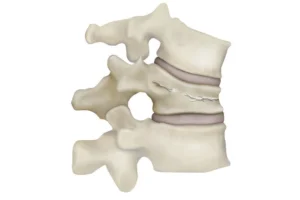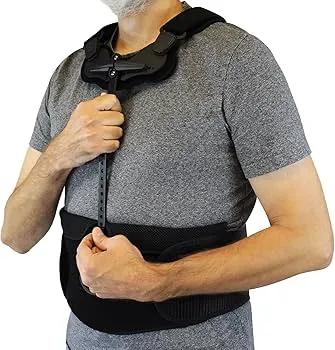Vertebral compression fractures (VCFs) affect over 700,000 Americans each year. These small spine fractures, often due to osteoporosis, trauma, or cancer, can cause intense pain and disability. Fortunately, several vertebral compression fracture treatment options can relieve symptoms, improve mobility, and restore quality of life.

Diagnosing a Vertebral Compression Fracture
The first step in treating a VCF is proper diagnosis. A clinical exam, followed by imaging like X-rays or MRI, helps determine whether a fracture is recent or chronic. MRI is especially helpful for detecting acute fractures or ruling out other causes like infection or cancer.
If the fracture followed a fall or motor vehicle accident, trauma could be the underlying cause. In these cases, it is important to consider whether the injury is a vertebral compression fracture after a trauma.

First-Line: Conservative Management
For most people, especially those with mild symptoms and no nerve issues, conservative (nonsurgical) treatment is the first choice. This includes:

- Pain control: Acetaminophen or NSAIDs help relieve pain, but NSAIDs should be used cautiously in older adults.
- Calcitonin: Provides short-term pain relief but is not recommended long-term due to safety concerns.
- Bracing: A back brace such as a TLSO can offer temporary support and help limit motion during healing.
- Physical therapy: Once pain improves, physical therapy helps restore strength and movement.
- Vitamin D and calcium: Essential for bone health. If you have low levels, visit our vitamin D and osteoporosis post.
- Osteoporosis treatment: Addressing the underlying bone loss is key. Learn more here.
When Conservative Treatment Fails
Sometimes, pain continues for weeks or months despite conservative care. In these cases, minimally invasive procedures like vertebroplasty or balloon kyphoplasty can provide significant relief.
Vertebroplasty and Balloon Kyphoplasty
Both procedures involve injecting bone cement into the fractured vertebra. In kyphoplasty, a balloon is first inflated to create space and possibly restore some height. In vertebroplasty, cement is injected directly.
Benefits of vertebral augmentation include:
- Faster pain relief
- Quicker return to daily activities
- Lower risks of pneumonia, heart problems, and urinary infections
- Fewer days in the hospital
- Up to 22% lower risk of death at one to five years
Multiple studies show that vertebroplasty and kyphoplasty improve quality of life and reduce disability more quickly than conservative treatment. Most of the benefit is seen within the first three months.

Long-Term Outcomes
Although early benefits are clear, differences in outcomes tend to lessen after one year. However, faster recovery, better early mobility, and lower complications make augmentation a strong option for patients in severe pain or with limited mobility.
Safety and Fracture Risk
The risk of new or adjacent fractures is not significantly increased with these procedures. Complication rates are low, especially when performed by experienced specialists.
Cost and Insurance Coverage
Medicare’s national average reimbursement for kyphoplasty is approximately $6,000 to $8,000 depending on setting and geography. Most insurances, including Medicare, cover vertebral augmentation for acute compression fractures and those caused by cancer. Learn more about kyphoplasty costs.
Rare Need for Surgery
Surgical fusion is rarely required. It is typically reserved for patients with severe spinal instability or nerve compression that causes weakness or loss of bladder or bowel control.
Takeaway
The best vertebral compression fracture treatment depends on the severity of symptoms and the underlying cause. While many improve with pain medications and physical therapy, vertebral augmentation offers rapid relief for those in disabling pain. Proper evaluation and individualized care are essential.

Make the Call Today
At Red Butte Pain Solutions, we help patients reclaim their lives from vertebral compression fractures. If you’re in Mesa, Casa Grande, Chandler, Ahwatukee, Sun Lakes, Laveen, or Maricopa, we’re here to help you heal.
Schedule now or call us at 602-633-4334 to begin your recovery journey.
